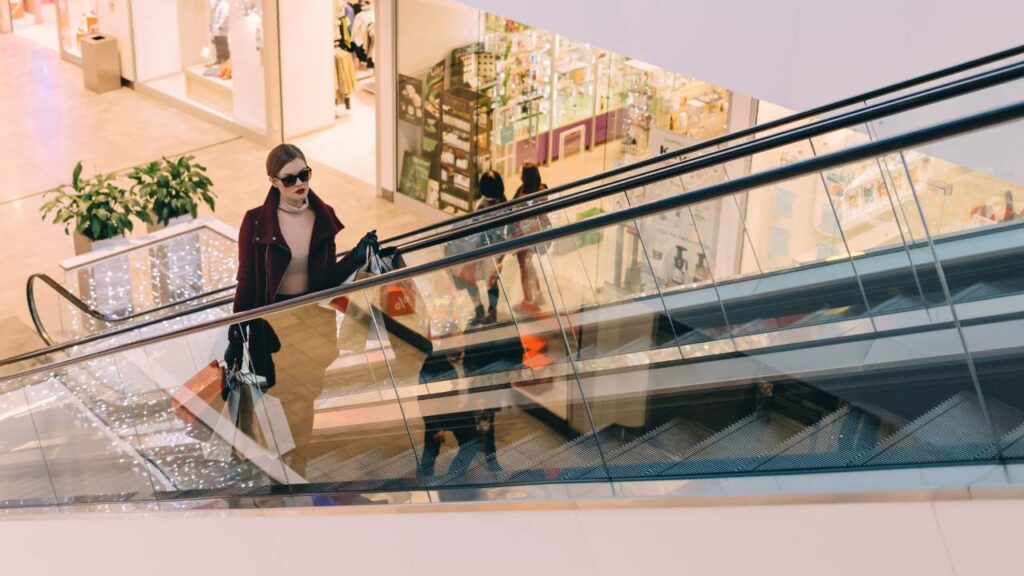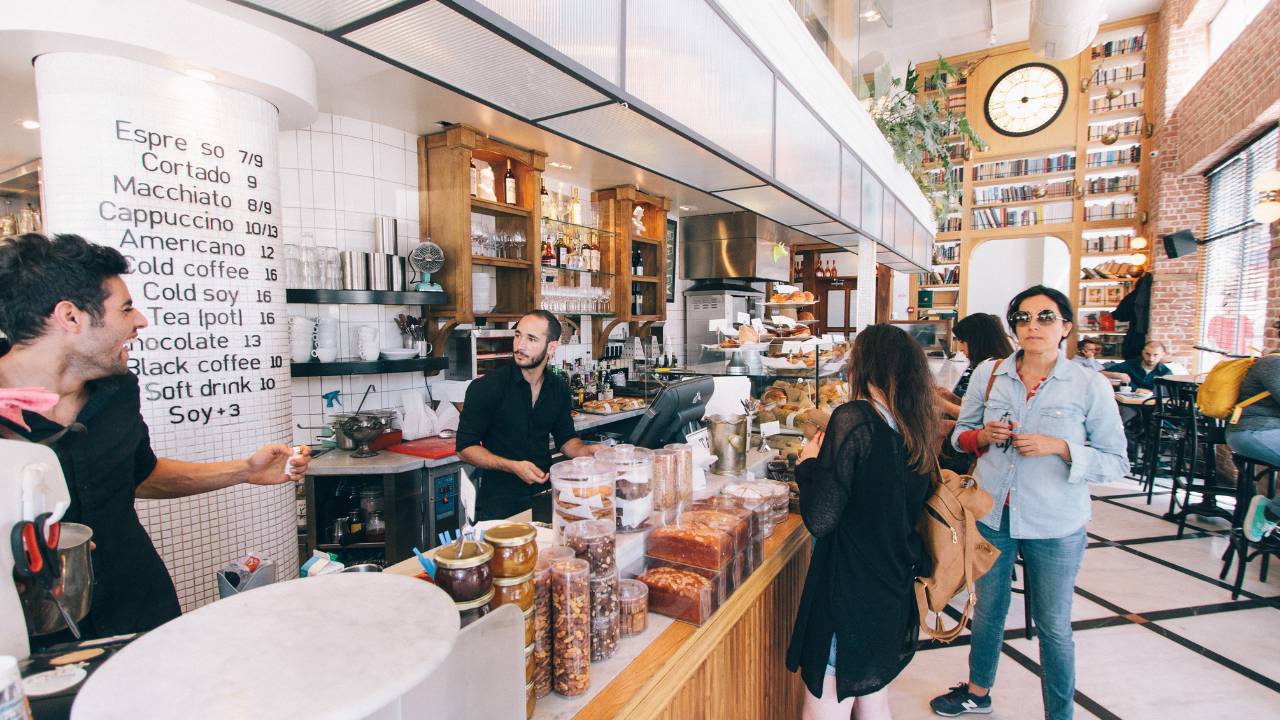The Influence of Shop-Fitting on Retail Success
Shop-fitting can be the secret ingredient to turning a casual browser into a loyal customer. It’s all about creating an inviting atmosphere that captures the essence of your brand and showcases your products in the best possible light. When you think about the layout, lighting and fixtures in your shop, you’re not just considering the aesthetics; you’re designing a situation that optimises your customers’ shopping experience, influences their purchasing decisions and ultimately contributes to the success of your retail business.
The Importance of Store Design in Retail Success
Store design plays a crucial role in the retail success by enhancing customer experience and solidifying brand identity. An effective store layout and inviting aesthetic work hand-in-hand to attract and retain customers.
Strategic Layout and Customer Navigation
When you walk into a retail space, the strategic layout guides your journey around the store. Retail shopfitters, like the well-known company 3 Rock, realise that a store should be designed to lead customers smoothly from the entrance to high-interest products and towards the point of sale. For instance:
- Entrance Area: Right at the outset, you’re welcomed by a decompression zone. This is an open space that allows you to adapt to the new environment and start your shopping experience on a positive note.
- Main Aisle: Following the main aisle, which typically showcases key products, influences your path and exposure to various items.
- Departmental Signage: Clearly visible signs help in efficiently navigating different sections of the store.
Aesthetic Appeal and Brand Identity
The aesthetic appeal of a store isn’t just about looking good; it’s about conveying the essence of your brand. Your store’s design communicates who you are and what you stand for to the customer. In essence, it helps build a brand in the minds of consumers.
- Colour Scheme: Utilise your brand colours consistently across the store to create a strong visual identity.
- Lighting: Good lighting not only brightens up the space but also highlights products, creating ambience and focus where needed.
- Furnishings and Fittings: These are the finer details that nuance your brand’s aesthetic, from sleek shelving to cosy seating areas that invite customers to linger longer.
Technological Integration in Shop-Fitting
In the realm of shop-fitting, embracing technology not only shapes the shopping experience but also streamlines store operations. Keeping pace with digital trends and automated processes can markedly influence your retail success.
Digital Advancements in Retail Spaces
The integration of digital devices such as interactive kiosks and augmented reality (AR) stations invites you, the customer, to engage with products in a novel way. Interactive displays can offer you personalised recommendations and detailed product information at a touch, enhancing your shopping experience.
Smart shelving, equipped with weight sensors and digital price tags, allows for real-time inventory tracking and dynamic pricing. This technology aids in maintaining stock levels and can attract your attention with promotions based on consumer behaviour insights.
Automation and Efficiency
Automation in shop-fitting streamlines operations and can significantly increase the efficiency of the retail space. Self-checkout systems, outfitted with user-friendly interfaces, empower you to complete purchases with ease, reducing wait times and increasing turnover rates.
Inventory management robots, working behind the scenes, ensure products are always available, directly affecting your satisfaction. These automated systems can rapidly locate and restock items, making sure that what you seek is always on the shelf.
Incorporating technology into shop-fitting aspects not only augments the ambience of the store but also provides tangible benefits to both consumer and retailer, driving the retail industry forward.
Consumer Preferences and Behaviour

In retail, your shop fit-out can greatly influence purchasing decisions. It’s essential to align your store’s design with what your customers prefer and how they behave.
Aligning Design with Target Market
Your store’s design should resonate with your target demographic. If you’re aiming to attract a younger audience, incorporating technology and interactive displays may increase engagement. For a more affluent customer base, a minimalistic design with high-end fixtures can create an inviting, exclusive atmosphere.
- Who they are: Identify age, gender, income level, and lifestyle.
- What they value: Comfort, convenience, luxury, or sustainability.
- How to cater to them: Through layout, lighting, and curated experiences.
Influence of Trends on Consumer Expectations
Consumer expectations are not static; they evolve with trends. You must stay updated with retail design trends that align with your customers’ expectations to remain competitive.
- Current trends influencing behaviour:
- Sustainability – Eco-friendly materials and green spaces.
- Personalisation – Tailored experiences and customised services.
- Technology – Interactive screens and digitised payment options.
Impact of Shop Fitting on Retail Operations
Your shop’s layout plays a crucial role in operational efficiency and customer experience. The right fittings can enhance the flow of in-store traffic, aid in effective inventory management, and make products more accessible.
In-Store Traffic Flow and Merchandising
With a thoughtfully designed layout, you can guide your customers through the store, ensuring they encounter key merchandise. Shelving units, display tables, and promotional stands must be placed strategically to create an intuitive flow that subtly leads customers to high-priority products.
- Aisle Space – Keep it ample for comfortable navigation.
- High-Impact Areas – Place popular items where they’re most seen.
- Visibility – Ensure that your products can be easily seen and reached.
Consider the supply chain and merchandising in your layout decisions. Efficient shop fittings can help reduce restocking times and enhance the presentation of new stock.
Inventory Management and Product Accessibility
When you optimise your shop fittings – especially in today’s post-pandemic economy – you make the best use of your space. Clear and accessible product placement supports faster inventory turnover, which in turn can lead to a more responsive supply chain.
- Storage Solutions: Use vertical space with high shelving for overstock.
- Easy Access: Ensure employees can quickly restock items without disrupting the shopping experience.
Inventory management is about maintaining the right balance. Keep fast-moving items accessible to keep shelves stocked and use inventory data to adjust your shop fitting strategy where necessary.
Adapting to Market Conditions

In today’s rapidly evolving retail landscape, your ability to adapt to market conditions is crucial for success. Changes brought about by the pandemic and the need for integrated online retail solutions are especially significant.
Pandemic-Driven Changes in Retail
The Covid-19 pandemic has irreversibly altered the way you engage with physical shops. Firstly, social distancing measures have made ‘contactless’ experiences preferable. Shops responded by implementing:
- Automated entry and payment systems
- Larger aisle spaces for safe navigation
Secondly, there has been a surge in hygiene-focused shop-fitting designs. This includes:
- Installations of sanitation stations
- Surfaces treated with antimicrobial coatings
Omnichannel Strategies and Online Integration
With the rise of online retail, your shop must deliver a seamless experience across all platforms. Omnichannel strategies allow consumers to engage with your brand through multiple touchpoints. This might involve:
- In-store pickup options for online purchases
- Interactive digital displays linked to your online catalogue
Online integration also means your physical shop should be optimised for digital efficiency with features such as:
- QR codes that connect to online deals
- Tablets for instant access to your wider inventory
Your shop’s layout and technologies are now expected to facilitate an integrated buying journey, combining the best of online convenience and in-store experience.
Financial Considerations of Shop Fitting
Investing in shop fitting is crucial for your retail success, balancing aesthetics with functionality to ensure cost-effectiveness and influence customer perception of value.
Cost-Benefit Analysis of Design Investments
When you’re assessing the cost-benefit of your design investments, you’re looking at how every pound spent can potentially return more in sales. Initial costs include the design, materials, and labour, while anticipated benefits could be higher foot traffic and increased average transaction values.
- Initial Investment:
- Design Costs: Professional fees or software for layout planning.
- Material Costs: Quality, durability, and aesthetics of fixtures and fittings.
- Labour: Installation and custom work price.
- Return on Investment (ROI):
- Sales Increase: Attributable to improved store layout and design.
- Customer Retention: Does the environment foster repeat business?
- Brand Equity: Enhanced perception can justify higher price points.
It’s also important to consider the longevity of your fit-out against industry trends. Ensure your design remains relevant so the need for frequent renovations doesn’t erode profit margins.
Pricing Strategy and Value Perception
Your pricing strategy is inherently linked to the perceived value of your products, and your shop fit-out can influence this perception. Premium materials and a bespoke design often allow for higher pricing due to the improved value perception they create.
- Premium Pricing:
- Justified by a luxurious fit-out which elevates the product’s perceived worth.
- Aligns with a high-end business model.
- Value-Oriented Pricing:
- Can be complemented by a cost-effective, smart fit-out.
- Signals efficiency and savings to price-sensitive customers.
Measuring the Effectiveness of Shop Fitting
Shop fitting can profoundly influence your retail business’s success. By analysing specific data points and gathering customer insights, you can evaluate how your shop’s layout and design affect your store’s performance.
Data Analytics and Performance Metrics
To understand the impact of your shop fitting, you should integrate data analytics into your evaluation process. Use performance metrics such as sales per square foot, dwell time, and conversion rates to ascertain the effectiveness of different shopfitting elements. For instance:
- Sales Per Square Foot: This metric will tell you how much revenue is generated for every square foot of floor space.
- Dwell Time: Longer dwell times can point to a more engaging store layout, which may lead to increased sales.
- Conversion Rates: Understanding the ratio of store visitors to purchases can indicate whether your shop fitting is conducive to closing sales.
By employing predictive analytics, you can also forecast future trends and make data-driven decisions to optimise your store layout.
Customer Feedback and Experiential Measures
Your customers’ feedback is invaluable. Encourage them to share their in-store experiences, which can provide insights that pure data may not capture. You can collect customer feedback through:
- Surveys: Short, in-store or post-visit surveys about layout, navigation, and overall shopping experience.
- Feedback Forms: Digital or physical forms that allow for more detailed customer testimonials.
Analyse this customer data to understand the sensory and emotional aspects of your shop fitting. Are customers finding their way around easily? Is the store atmosphere inviting? These experiential measures can highlight areas for improvement that may not be immediately evident through quantitative analysis.
Future Trends in Shop Fitting and Retail Design

Your retail space needs to adapt to the latest trends and technology to stay ahead. By harnessing emerging innovations and understanding shifts in consumer demands, your shop fitting strategy can greatly influence your retail success.
Emerging Technologies and Consumer Demands
Technology is revolutionising how you engage with customers. Interactive displays and virtual reality are not just trends but are becoming essentials in retail environments. They offer immersive experiences that can significantly enhance customer satisfaction. Here’s how you can meet consumers’ growing expectations:
- Seamless Shopping: Integrating advanced RFID (Radio-Frequency Identification) tags allows for automated checkouts, reducing wait times.
- Personalised Experience: Using advanced analytics, you can tailor shop layouts and product recommendations for individual customers.
Imagine your customers walking into your store and being greeted by a smart mirror that suggests products based on their past purchases. The future is here, and it’s all about personalisation and efficiency.
Leadership and Vision in Retail Innovation
Strong leadership is fundamental to navigating the evolving retail landscape. Your vision will set the course for adopting new shop-fitting trends. Consider these points for effective leadership in this field:
- Innovation: Venture beyond traditional designs to incorporate modular fixtures and sustainable materials.
- Strategy: Employ data from advanced analytics to optimise the store layout according to consumer behaviour patterns.
Keep in mind that leadership in retail design isn’t just about following trends; it’s about setting them. Your forward-thinking approach can redefine shopping experiences and set new standards in retail.
Conclusion
In embracing effective shop-fitting, you elevate the potential for success in your retail business. It extends beyond aesthetics, seamlessly aligning with your business model to shape an environment that positively influences consumer behaviour.
Every shelf, lighting fixture, and sign becomes a guide in your customers’ journey, enhancing their experience and encouraging exploration and purchase. A meticulously designed space reflects strategic considerations – showcasing products, ensuring comfort in pathways, and maintaining branding consistency.
Your investment in high-quality shop-fitting echoes the core of your business ethos, demonstrating a commitment to delivering an exceptional in-store experience. It’s not just about selling products; it’s about curating a space that draws customers back time and again.
